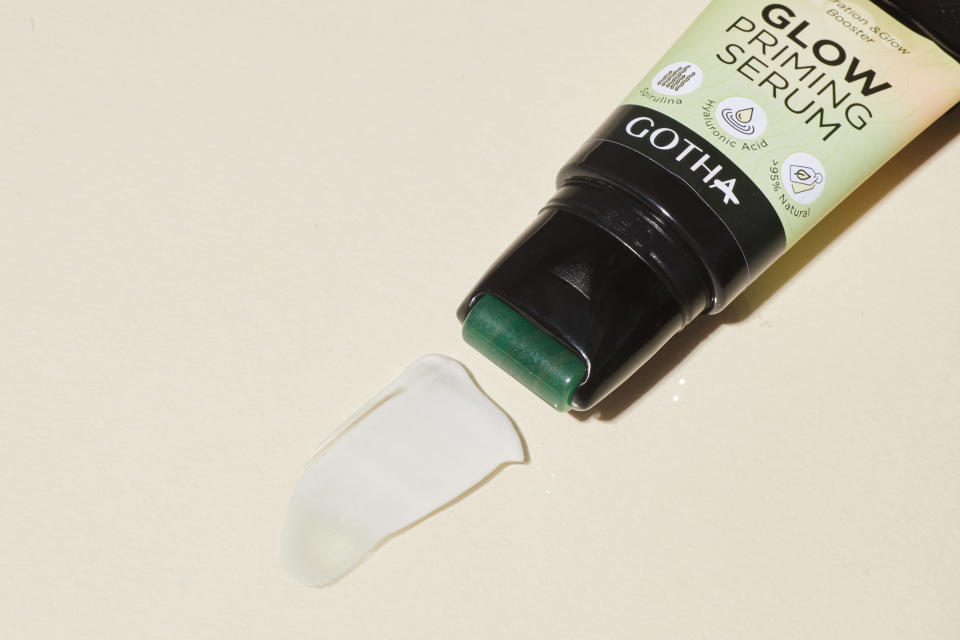
BOLOGNA, Italy — For packaging and beauty suppliers, it is the best — and worst — of times.
That was the sense emanating from the recent session of Cosmopack, the packaging branch of Cosmoprof Worldwide Bologna, the trade show that ran from April 28 to May 2. The session marked its return to an in-person format for a full-fledged event in the sprawling fairgrounds.
More from WWD
Orders are back and rising for beauty suppliers, executives said, especially in the makeup industry that was particularly hard-hit during the early phases of the ongoing coronavirus pandemic. There’s a flurry of excitement about sustainable packaging solutions, which are in rising demand.
But what’s making trading particularly difficult today is a confluence of factors driving up costs and lengthening lead times, including inflation rates hitting record highs.
“Energy prices are a major subject, raw material prices in general and, in turn, it’s the ongoing discussions with the customers about prices,” said Dominic Bakic, chief executive officer at Bakic Packaging, echoing the concerns of many. “Because we need to pass on the prices, it’s not anymore like 4 percent to 5 percent buying cost increases — it’s skyrocketing.”
That is to say, around 10 percent, while energy prices have approximately doubled. So that makes transport and therefore deliveries much more expensive. Further, shipping goods from Asia is not only very costly, but closures there — especially in China — due to the health crisis have caused congestion in ports, among other woes.
Whereas before the pandemic it took packaging manufacturers around eight to 10 weeks to deliver finished goods, the cycle has lengthened to between 18 and 22 weeks. Companies can today spend five to six times more than in the past to export containers from China, for instance, according to Gotha Cosmetics CEO Paolo Valsecchi, who underscored these phenomena are not limited to cosmetics packaging companies, but challenge every industry.
“It’s really difficult getting the shipments or vessels booked and all that,” said JungKyun Noh, global product marketing team manager at Cosmax, adding disruption in the supply chain starts pre-production and runs through post-production.
Concurrently, demand keeps growing.
“The order book is pretty big everywhere, because it’s taking twice as long to produce sometimes,” said Denis Maurin, global president of sales and innovation at HCT.
“A huge order book today doesn’t mean that the market is doing super well,” Valsecchi echoed.
Looking on the bright side, Bakic believes the challenges of manufacturing abroad — especially in China — and exporting from there create opportunities in Europe and the U.S. for local production.
“I see a major change really taking place in the next two years,” he said.
Executives already began making shifts in their supply chains starting about six months ago.
“Now, you can see that markets are picking up again strongly, and the brands are really getting into gear for implementing the solutions,” Bakic continued.
Setting up increased capacity doesn’t happen in a blink, however. A new machine can take approximately three months to be delivered and installed.
Some companies are bringing manufacturing activities home from abroad, while others are acquiring capabilities in other countries to enhance their proximity to a specific market or bulking up production domestically.
As Bakic noted, a high increase of demand for his company’s German-made compacts (a category historically dominated by China) means his company is investing in production capabilities. Last year, investments went toward two new machines and a big assembly line for compacts.
Cosmei aims to move all of its production to Italy from China, where it manufactures some items.
Conversely, Gotha has recently stepped into China, taking a majority stake in the cosmetics formulation and filling company iColor Group. Valsecchi explained reasons why, including the huge potential of the Chinese market in terms of size and affinity with the company’s portfolio that mainly focuses on face products, such as foundation and primers.
“Then, only if you’re close to a market, you understand what it needs. It’s true that a certain product might be global, but for the fine-tuning of the color or coverage, every country is different,” the executive noted.
Maurin underscored that producing in China is still crucial for innovation and to enhance the firm’s proactive approach when offering new solutions to clients.
Pluses and minuses remain for producing in the country.
“In China, we have longer transit and expensive costs for shipping, but we’re still able to produce in two months and maybe shipping in other two, which is still shorter than waiting six months in the U.S.,” Maurin said.
Regarding price increases for raw materials, the surge has been acute for resources such as aluminum, plastic, wood, paper and cellulose.
“We have no choice, we stock the raw materials,” said Cécile Pompili, strategic marketing manager at Lumson. “It is the only solution to [respond] to this crisis.”

Courtesy of Lumson
Suppliers keep troubleshooting. As legislation starts mandating that food and beverage packaging must include certain percentage of PCR materials, for instance, they are beginning to look for alternate materials. At Cosmei, executives are turning toward plastic fished out of the oceans or materials with natural compositions, such as a sugar cane and bamboo.
Meanwhile, companies keep finding creative solutions to protect their clients — and the end consumer — from cost increases to the best of their ability. HCT, for example, has developed a new, cost-effective solution to protect its patented Zamac applicators while still keeping them safe and efficacious.
“As a contract manufacturing company, the cost we offer our clients is very sensitive,” Noh said. “So we need to really plan ahead and make contingency plans — like plan B, plan C — to minimize any kind of impact we can imagine or foresee. We have done quite a good job in that sense, with some uncontrollable exceptions [linked to] the supply chain. We minimize risks and have as much control over the situation as possible.”
Suppliers believe that supply chain issues will get better in the mid-term, probably by the end of the year.
“However, I don’t think that we are coming back to the old level,” Bakic said.
What’s here to stay for sure for the long term is the focus on sustainability. Cosmetics packaging manufacturers are now really walking the talk, and that’s sparking a lot of innovation.
One of the biggest booths at Cosmopack, that of HCT — which merged with KDC/One in 2019 — dedicated a whole area to the growing trend. “To continue to build the biggest library of sustainable packaging for us is key,” Maurin said.
“We started a while back, but now there are so many options. This year, 100 percent of the tools that we’re making for stock are sustainable,” he added, mentioning refillable, recyclable and PCR materials as changes to products that are being implemented.
HCT, of course, leaves it up to clients to decide what they wish for. “So when a customer comes to you and wants to do something that is really not green, we don’t have a choice. We will still want the project and we will do it,” Maurin said. “But if we have 10 options that are sustainable and two that are not, that makes it easier for them to pick one that’s sustainable.”
Valsecchi was cautious about the possibility of having wholly recyclable solutions, since sometimes the compatibility between those and certain product formulations is tricky.

Courtesy of Gotha
Cosmei highlighted a sustainable packaging concept in monomaterials — virgin plastic, as well as in PCR1. Isabella Milesi, marketing manager at the company, explained such packaging is suitable for water-based product textures, therefore good for skin care or makeup with skin care benefits, which is trending today.
The supplier was also showing aluminum packaging and acetate cellulose packaging, made 70 percent from wood pulp that’s mixed with 30 percent plastic for lipstick tubes that look marbleized. Cosmei works with paper, such as for the barrel of a mechanical pencil.
“Nowadays, most of our clients are coming and requesting new sustainable ideas. That ranges from biodegradable to PCR recycled plastic or glass,” Noh said. Cosmax has been leading some co-development in that space. One example is a shadow palette made of tree cellulose rather than plastic. Others are a serum in powder form that changes into a cream texture when rubbed on skin, and biodegradable formulas.
Lumson had a host of sustainable options, including packaging to reuse and recharge. Its airless model has a separation system, so different materials can be recycled correctly.
“We try to use materials that are 100 percent recyclable,” said Valentina Dragoni, marketing manager at Lumson. An example is an airless bottle wholly made of aluminum. Another airless bottle, of paper, is under development.
One of the innovations Bakic Packaging showcased is its premium Sophia refillable, recyclable jar with a recyclable, exchangeable lid. The group’s research showed that women don’t generally like to reuse a lid with a refillable jar.

Courtesy of Bakic Packaging
While progress in sustainable packaging is more advanced, striking a balance between clean formulations and high performance in makeup remains a challenge, especially as it crosses the ever-blurring skin care divide.
Gotha presented a new priming serum combining light pigments with hyaluronic acid that comes packaged in a tube topped with a jade roller applicator for a massage effect.
“After two years of minimal cosmetics, our perception of makeup has changed for good. [Previously], makeup has been bought with the eyes, based on colors. Now, customers want products that involve the other senses,” said Andrea Brambilla, product development and innovation director at Chromavis.
Products’ textures and their effects on application could increasingly impact business. As such, Chromavis has developed formulations in lightweight textures that transition from solid to liquid or to powder form. Some play with instant cold or hot effects that give a natural tint to skin, like blushes.
As Gen Z keeps tearing down beauty archetypes, cosmetics will go beyond the face and become total body experiences, according to Brambilla. She believes the likes of underarm hairs and beards will offer new opportunities for color cosmetics.
“Looking ahead, makeup will come back strong and stronger, [while] skin care is still here, too,” said Maurin, who explained HCT is looking at diversifying more into vitamin supplements as many brands are trying to take the lifestyle route.
In sync with its eco-friendly outlook, Chromavis is focused on developing multifunctional formulations.
“Fewer products with fewer ingredients, and [they] have to be cherry picked and included in functional doses,” Brambilla said.
Production-wise, the executive explained the company is veering toward “shorter processes, which require less energy and avoid transporting materials like water around the globe.”
FOR MORE, SEE:
Cosmoprof Worldwide Bologna Readies Return to Physical Main Event
Cosmoprof Marks Return to Physical Format With Special Edition
Cosmetics Packaging Suppliers Weather the Storm
Sign up for WWD’s Newsletter. For the latest news, follow us on Twitter, Facebook, and Instagram.




